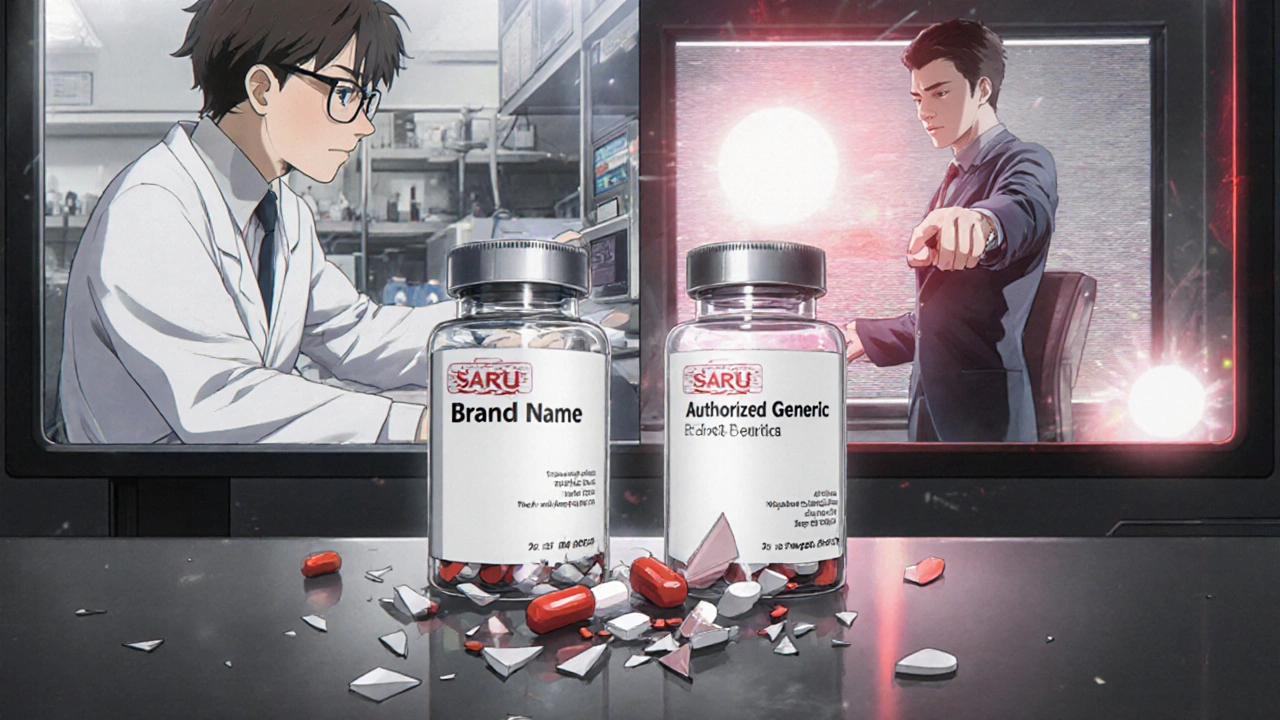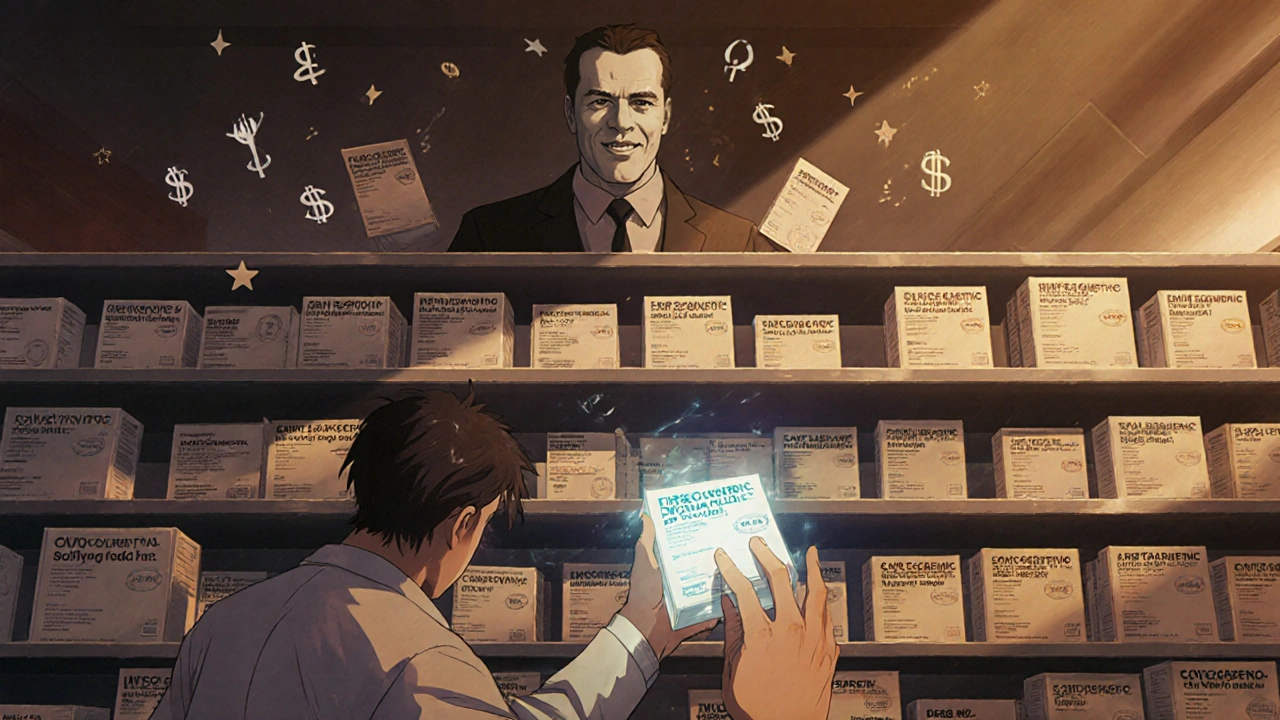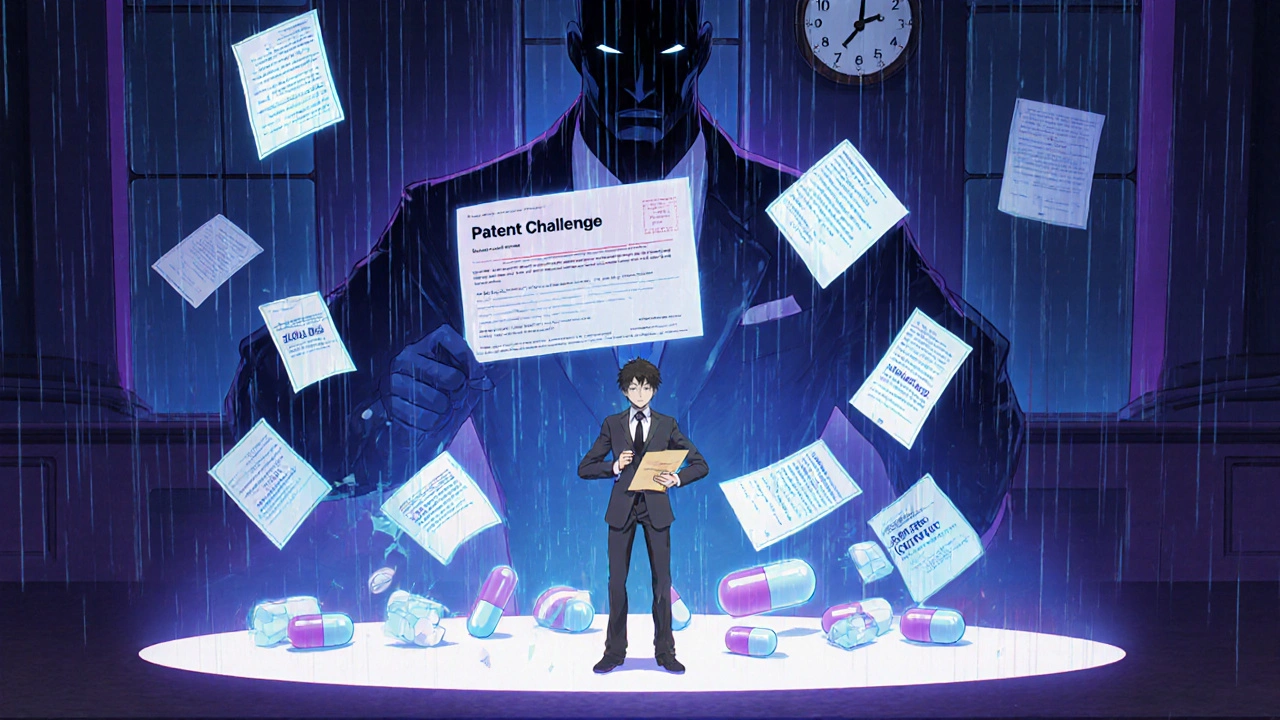When a brand-name drug loses its patent, the race to sell the first generic version begins. But here’s the twist: the company that made the original drug can launch its own generic version at the exact same time. And when that happens, the so-called "first generic" doesn’t get the windfall it was promised. This isn’t a glitch - it’s a strategy. And it’s reshaping how much you pay for medicine.
What’s the difference between a first generic and an authorized generic?
A first generic is the first company to successfully challenge a brand-name drug’s patent and get FDA approval to sell a copy. These companies invest millions in legal battles and clinical testing to prove their version works the same as the original. In return, the Hatch-Waxman Act of 1984 gives them 180 days of exclusive rights to sell that generic - no other generic can enter the market during that time. That exclusivity is meant to reward them for taking the risk.
An authorized generic is different. It’s made by the same company that produces the brand-name drug - or licensed to another company with the brand’s blessing. It’s the exact same pill, in the same factory, with the same ingredients. The only difference? It’s sold under a generic label and at a lower price. No patent challenge. No ANDA application. No 180-day wait. The brand company can launch it anytime.
That’s the key. Authorized generics don’t need FDA approval through the generic pathway. They piggyback on the original drug’s New Drug Application (NDA). That means they can hit the market in weeks, not years.
Why timing matters more than you think
The 180-day exclusivity window was designed to give the first generic a chance to capture 70-90% of the market. That’s where the real savings happen. But here’s what happens in practice: brand companies watch closely. They wait for the moment the first generic gets approved. Then - boom - they launch their own version.
According to research from Health Affairs, 73% of authorized generics launch within 90 days of the first generic’s approval. Over 40% launch on the exact same day. This isn’t coincidence. It’s calculated.
Take Lyrica (pregabalin), a nerve pain drug made by Pfizer. When Teva launched the first generic in July 2019, Pfizer immediately rolled out its own authorized generic through Greenstone LLC. Within weeks, Teva’s market share dropped from an expected 80% to just 50%. Pfizer’s version grabbed 30% of the business. The result? Prices didn’t fall as hard. Instead of dropping 85%, they fell only 70%. That’s billions in lost savings for insurers and patients.
How this breaks the system
The Hatch-Waxman Act was built on a simple idea: reward the first challenger. But when the brand company itself enters the market as a "generic," it undermines that incentive. First generics spend 2-3 years and $5-10 million per drug preparing for the fight. They risk everything. Then, just as they’re about to cash in, the brand company drops a copy on the market - and splits the prize.
Clarivate data shows that when an authorized generic enters during the exclusivity window, the first generic’s market share plummets from 80% to 45-60%. Revenue drops from $100-500 million to maybe half that. That’s not just bad for the generic company - it’s bad for competition. If companies can’t make a profit on the first entry, they’ll stop challenging patents. Fewer challenges mean fewer generics. Fewer generics mean higher prices.
And it’s not just small companies getting squeezed. Even big players like Teva and Mylan have seen their returns shrink. Executives on PharmaBoardroom say the profitable window for first generics has narrowed to just 45-60 days in many categories. That’s not a market - it’s a trap.

Who wins? Who loses?
Brand companies win. They keep control of the market, collect revenue from both their brand and their generic, and avoid the full price drop that comes with real competition.
Generic manufacturers lose. Their incentive to take on risky, expensive patent challenges fades. Some are already shifting focus to less contested markets or developing complex formulations where patent challenges are harder.
Patients and insurers lose too. Prices don’t drop as far or as fast. RAND Corporation found that when authorized generics enter during the exclusivity period, average price reductions drop from 80-90% to 65-75%. That might sound small, but on a $1,000-a-month drug, that’s $200-300 more per month - every month - for years.
Therapeutic areas hit hardest? Cardiovascular drugs (32% of cases), central nervous system meds like antidepressants and epilepsy drugs (24%), and metabolic drugs like diabetes treatments (18%). Drugs like Eliquis and Jardiance are now battlegrounds where this exact strategy is playing out.
The FDA’s role - and its blind spot
The FDA approves both types of drugs. But the process isn’t equal. First generics go through the ANDA pathway, which takes an average of 10 months - and sometimes over three years if the agency is backed up. Authorized generics? They’re already approved. The brand company just needs to change the label and ship it. No review. No delay.
Between 2008 and 2012, FDA backlogs delayed hundreds of generic approvals. Meanwhile, authorized generics slipped in quietly. Even today, less than 10% of generic applications get approved on the first try. Brand companies? Over 90% of their new drug applications clear the first hurdle.
The FDA doesn’t stop authorized generics. In fact, they’re allowed under current rules. The agency says they increase access. But that’s not the full story. They increase access - to a product made by the same company that just got paid $1 billion for the brand version.

What’s changing? The Inflation Reduction Act and beyond
In 2022, the Inflation Reduction Act took a stand. It explicitly said authorized generics are not considered "generic competitors" when the government negotiates drug prices for Medicare. That’s a big deal. It means when Medicare tries to lower the price of a drug like Eliquis, it doesn’t count Pfizer’s authorized generic as a reason to avoid negotiation. The law recognizes the trick.
But enforcement is weak. The FTC has tried to crack down on "pay-for-delay" deals - where brand companies pay generic firms to delay entry - but those cases are rare and hard to prove. And authorized generics? They’re legal. No payment. No contract. Just a launch.
Industry projections show authorized generics will make up 25-30% of all generic prescriptions by 2027, up from 18% in 2022. That’s not growth - it’s evolution. The game has changed.
What does this mean for the future of generic drugs?
Generic manufacturers are adapting. Some are building "dual-path" strategies: launching their own first generic while also partnering with brand companies to produce authorized versions. Others are focusing on complex generics - inhalers, injectables, topical creams - where patent challenges are harder and authorized generics are rarer.
But the core problem remains. The system was designed to reward the first challenger. Now, the challenger is often the same person who set the rules.
If you want real price drops, you need real competition. Not a copy from the same factory. Not a marketing trick. Not a brand company pretending to be a generic. You need independent companies entering the market - with their own labs, their own patents, their own risk.
Until that happens, the savings you’re promised won’t arrive. And the first generic? They’ll keep fighting - but they’ll keep losing.
What is a first generic?
A first generic is the first company to successfully challenge a brand-name drug’s patent and receive FDA approval to sell a generic version. Under the Hatch-Waxman Act, it gets 180 days of market exclusivity, during which no other generic can enter. This is meant to reward the company for taking the legal and financial risk of challenging a patent.
What is an authorized generic?
An authorized generic is a version of a brand-name drug made by the original manufacturer or a company it authorizes. It’s identical to the brand drug - same ingredients, same factory, same packaging - but sold under a generic label. It doesn’t need FDA approval through the generic pathway because it uses the brand’s existing New Drug Application (NDA). It can launch at any time, even during the first generic’s exclusivity period.
Why do brand companies launch authorized generics?
Brand companies launch authorized generics to capture market share when a first generic enters. By launching their own version on the same day, they split the generic market and prevent the first generic from capturing 80-90% of sales. This reduces price drops, protects their revenue, and undermines the financial incentive for future patent challenges.
Do authorized generics lower drug prices?
They lower prices - but not as much as real competition. When a first generic enters alone, prices typically drop 80-90%. When an authorized generic enters at the same time, the drop averages only 65-75%. That’s because two sellers - one of them the original brand - aren’t competing as hard as multiple independent generics would. The result? Less savings for patients and insurers.
Are authorized generics regulated differently?
Yes. First generics must go through the full Abbreviated New Drug Application (ANDA) process, proving bioequivalence to the brand drug. Authorized generics bypass this. They’re approved under the brand’s original New Drug Application (NDA), so they don’t need separate safety or efficacy data. This lets them launch faster - often within days of a first generic’s approval.
Is this practice legal?
Yes. Authorized generics are legal under current FDA and antitrust laws. However, their use during a first generic’s exclusivity period has been criticized by public health researchers and consumer advocates as undermining the intent of the Hatch-Waxman Act. The Inflation Reduction Act of 2022 acknowledged this by excluding authorized generics from Medicare price negotiation calculations.
What drugs are most affected by authorized generics?
Cardiovascular drugs (like blood pressure and cholesterol meds) make up 32% of cases, followed by central nervous system drugs (like antidepressants, epilepsy meds, and nerve pain drugs) at 24%, and metabolic drugs like diabetes treatments at 18%. Blockbuster drugs such as Lyrica, Eliquis, and Jardiance have all seen authorized generic launches timed to undercut first generic entrants.

10 Comments
so like... the brand companies just cheat and call it legal? wow. guess i should stop being surprised that pharma is a pyramid scheme. no wonder my insulin costs more than my rent.
this is such a classic case of the system being rigged. i work in pharma logistics in india and we see this all the time. the authorized generics? they're not even trying to compete. they're just there to kill the real challengers. sad but true.
it’s wild how the law was built to reward risk but now rewards clever loopholes. the first generic company puts up millions, fights for years, and then gets undercut by the very company they were trying to unseat. it’s like training for a marathon only to have the finish line moved 200 meters back right before you cross it. no wonder innovation is slowing down.
i just checked my last prescription. it was an authorized generic. i thought i was saving money. turns out i was just paying the same company under a different name. feels like being tricked into buying the same cake but with a cheaper wrapper.
so the fda lets this happen?? lmao. they’re supposed to be the guardians of health and they’re just letting big pharma play monopoly with our meds. i bet the lobbyists are having a field day. #pharmabullshit
The structural incentives within the Hatch-Waxman Act have been systematically subverted by authorized generic strategies. This represents a market failure that undermines public health objectives.
i know it sounds hopeless, but the Inflation Reduction Act is actually a step forward. at least now they’re acknowledging the trick. maybe if enough people speak up, we can push for real reform. we deserve better than this.
who cares? i just want my pills cheap. if it’s the same drug, why does it matter who made it? stop overthinking it.
the real tragedy is how everyone thinks this is some new scam when it’s been happening since the 90s and no one did anything. you think patients are the victims? no we’re the suckers who keep buying into the lie that capitalism cares about health
this is why america’s healthcare is a joke. canada doesn’t let this crap happen. our drug prices are lower because we don’t let corporations play games with life-saving medicine. shame on you US.
Write a comment